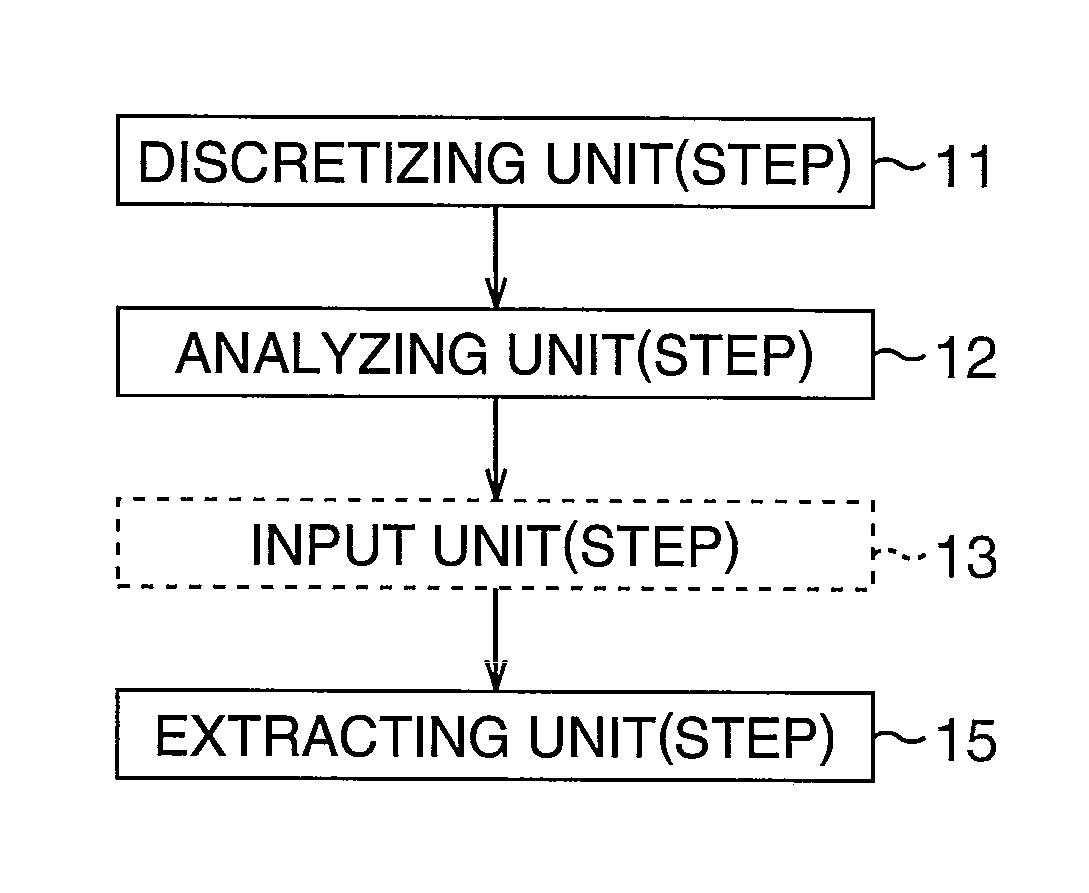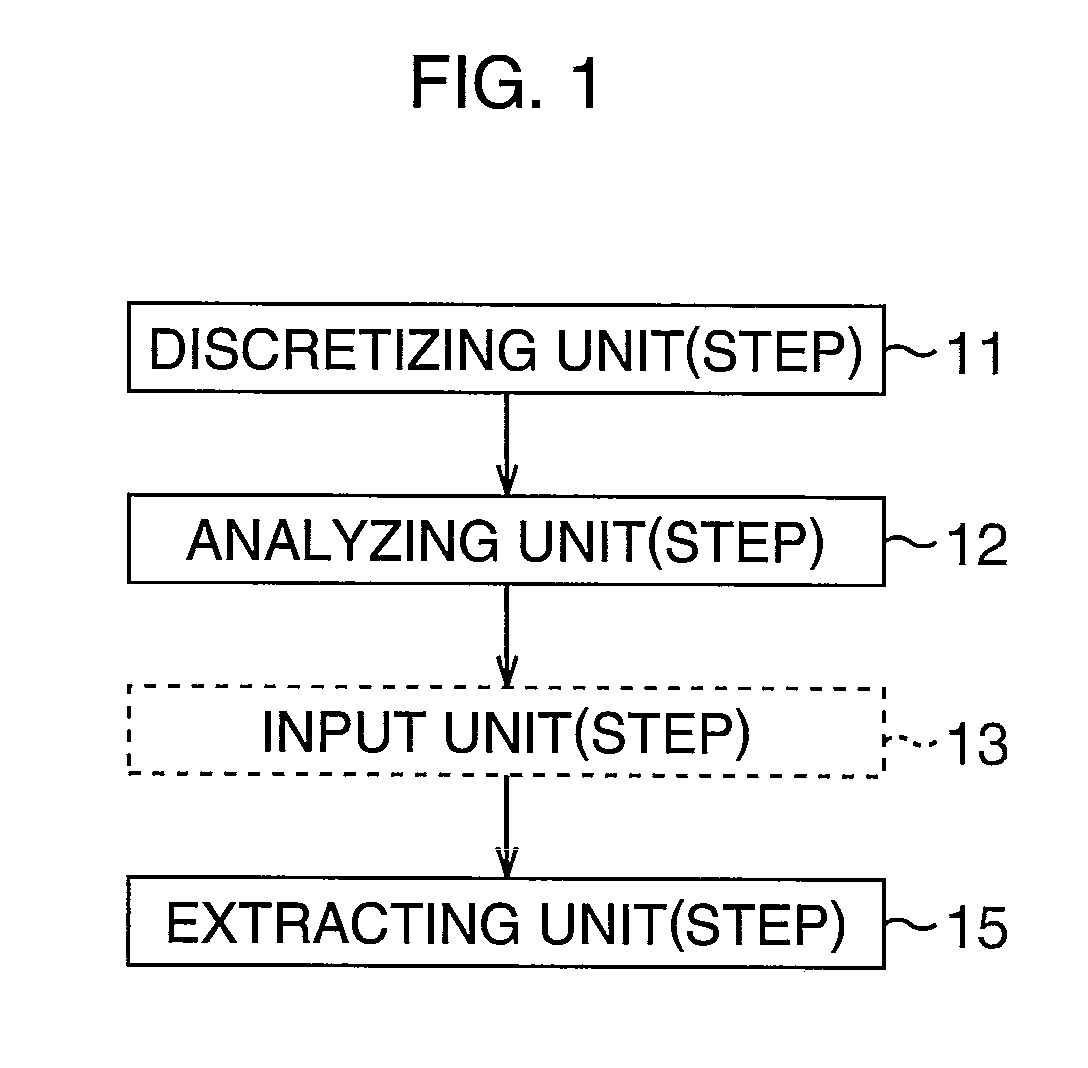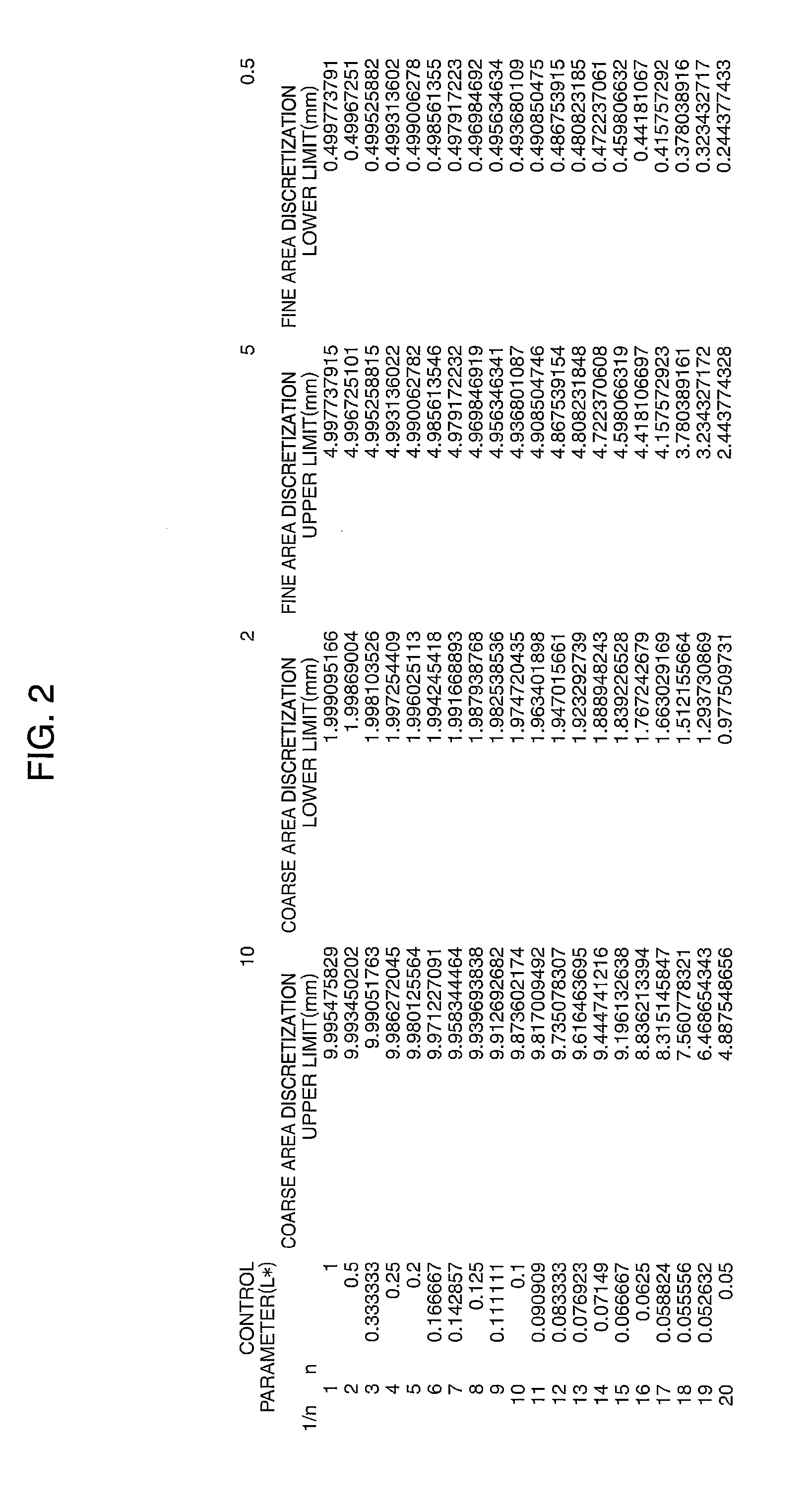Fracture prediction method, processing device, program product and recording medium
a technology of prediction method and program product, applied in the field of fracture prediction method, can solve the problems of difficult to reliably extract fracture risk portions by the conventional arts, and achieve the effects of reducing the dependence on analysis conditions selection, reducing the cost of development, and reducing the difficulty of extraction
- Summary
- Abstract
- Description
- Claims
- Application Information
AI Technical Summary
Benefits of technology
Problems solved by technology
Method used
Image
Examples
example 1
[0137]The present invention will be explained below by way of presenting actual examples. A forming experiment was performed such that a material sheet shape of a hole expansion test by a cylindrical punch which is normally conducted is divided, and a flange-up forming is imitated. Specifically, a 180-mm square material sheet provided with a hole (diameter: 60 mm, or 40 mm, 20 mm) at the center was cut to ¼ as shown in FIG. 6, and as shown in FIG. 7A to FIG. 7C, a sheet to be processed 4 was held on a 106φ die 1 with a shoulder R of 5 mm by a blank holder 2, and thereafter the formation was performed using a 100φ cylindrical flat-bottom punch 3 with a shoulder R of 10 mm. At this time, the flange-up height 5 is about 20 mm for a hole diameter of 60 mm, about 30 mm for a hole diameter of 40 mm, and about 40 mm for a hole diameter of 20 mm. As the material, a cold-rolled steel of 440 MPa class having a sheet thickness of 1.6 mm was used. The forming was performed with a group of four ...
example 2
[0143]Two or more adjacent elements were combined using the analysis results with the 60-mm hole diameter and the small element size (about 2 mm) in Example 1, a deformation gradient was evaluated by comparing the difference before and after combining. Thus, whether fracture determination is possible or not was examined.
[0144]Element discretization and formation analysis were performed similarly to the case of the small element size in Example 1 (FIG. 8A).
[0145]Analysis values of the elements (particularly around the vicinity of elements in which analysis values peak) were output in advance from formation analysis results together with position information thereof. The data thereof were inputted to the computer for data analysis, the arithmetic average of analysis values were calculated for each of 2 to 5 combined adjacent elements selected this time, and the difference with the maximum value of analysis values of the initial analysis was calculated.
[0146]The difference between the ...
example 3
[0147]It was examined whether fracture prediction of materials having various strength is possible or not under the test condition of the 40-mm hole diameter in Example 1. The materials used range from mild steel to a steel sheet of 980 MPa class shown in Table 2. Ones having a sheet thickness of 1.6 mm were used.
[0148]As a result of conducting an experiment, a stretch flange crack occurred in the center of a portion to be flanged up in the 980 MPa class steel sheet. Finite element method analysis was performed under the same conditions as the experiment. The analysis was performed with two types of element sizes, about 2 mm and about 4 mm. As shown in FIG. 8A and FIG. 8B, edge portions are connected smoothly without any recess or projection, and to be careful about making the element size change surely along the edge portions, discretizing of edge portions was automatically performed by a computer with the number of discretizations on the circumferential part being specified. Formi...
PUM
 Login to View More
Login to View More Abstract
Description
Claims
Application Information
 Login to View More
Login to View More - R&D
- Intellectual Property
- Life Sciences
- Materials
- Tech Scout
- Unparalleled Data Quality
- Higher Quality Content
- 60% Fewer Hallucinations
Browse by: Latest US Patents, China's latest patents, Technical Efficacy Thesaurus, Application Domain, Technology Topic, Popular Technical Reports.
© 2025 PatSnap. All rights reserved.Legal|Privacy policy|Modern Slavery Act Transparency Statement|Sitemap|About US| Contact US: help@patsnap.com



